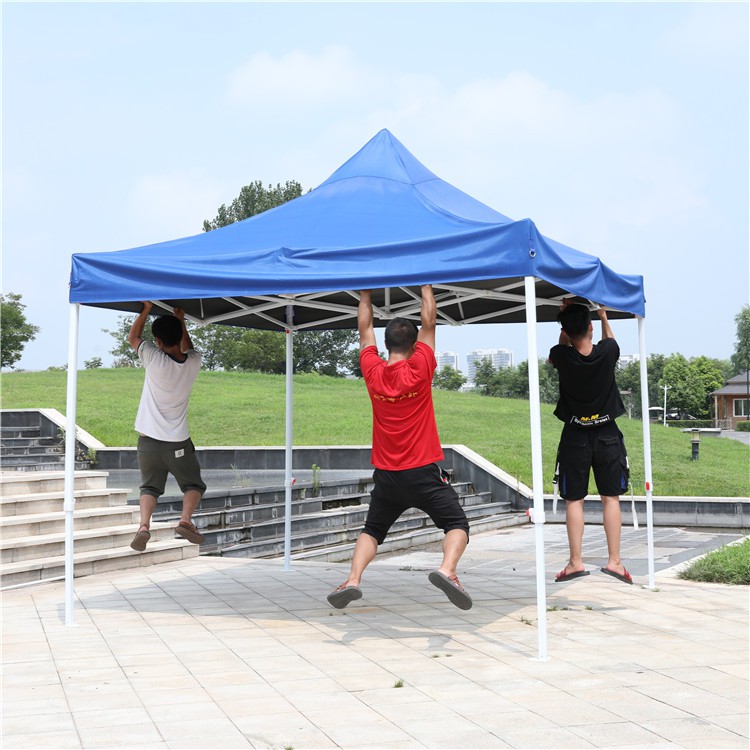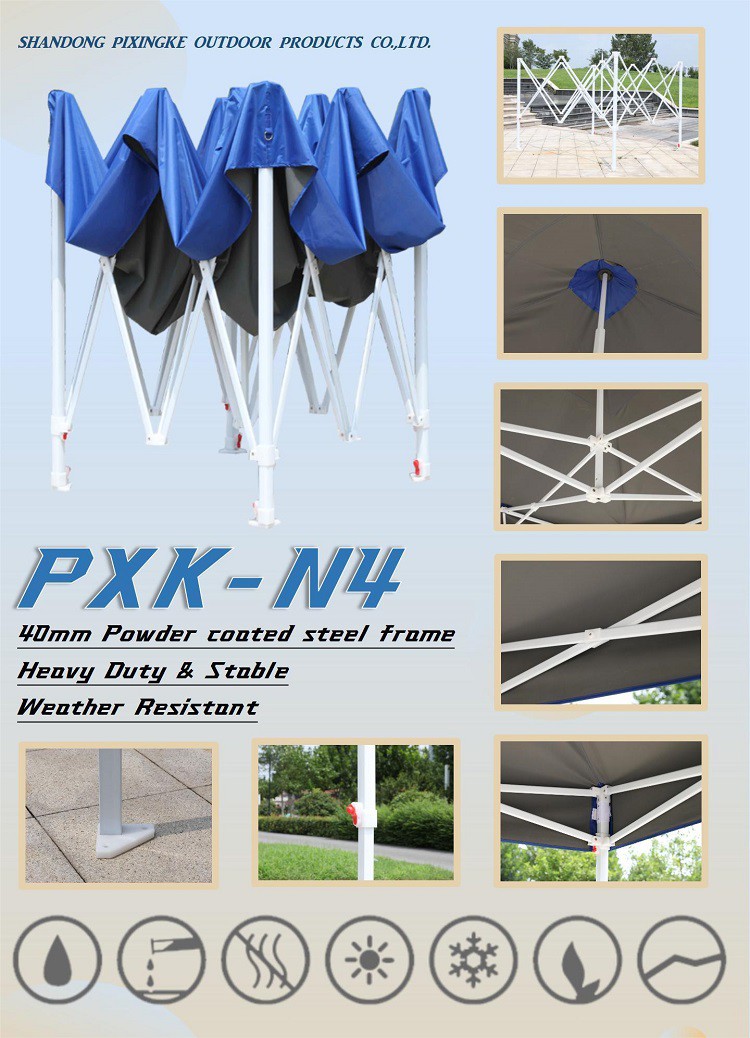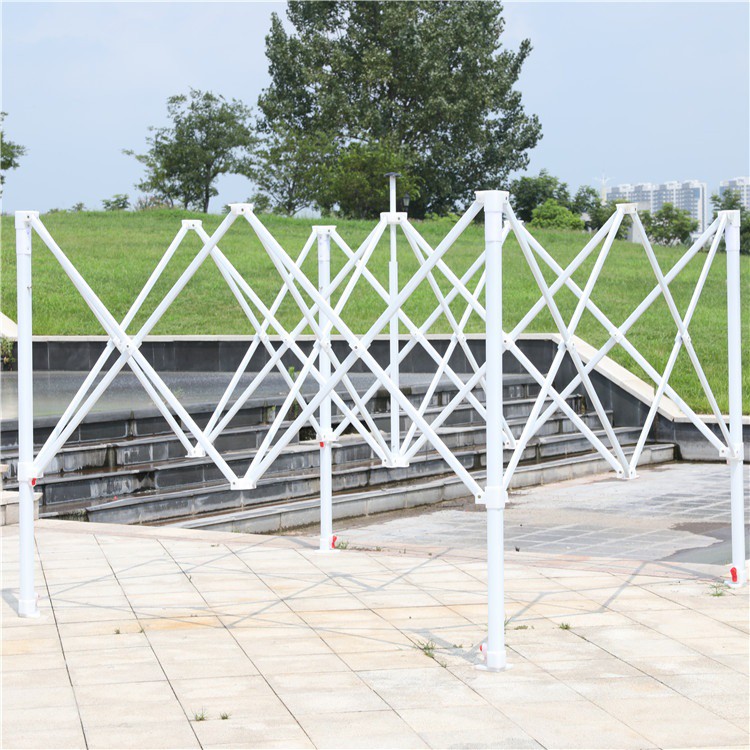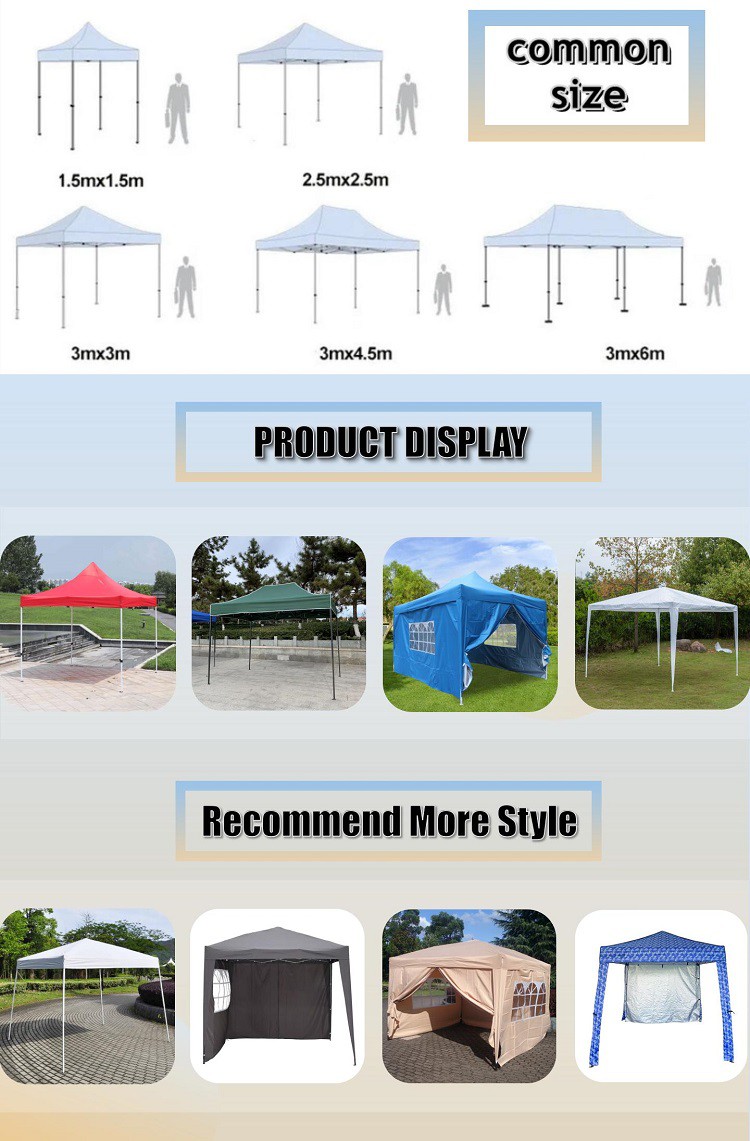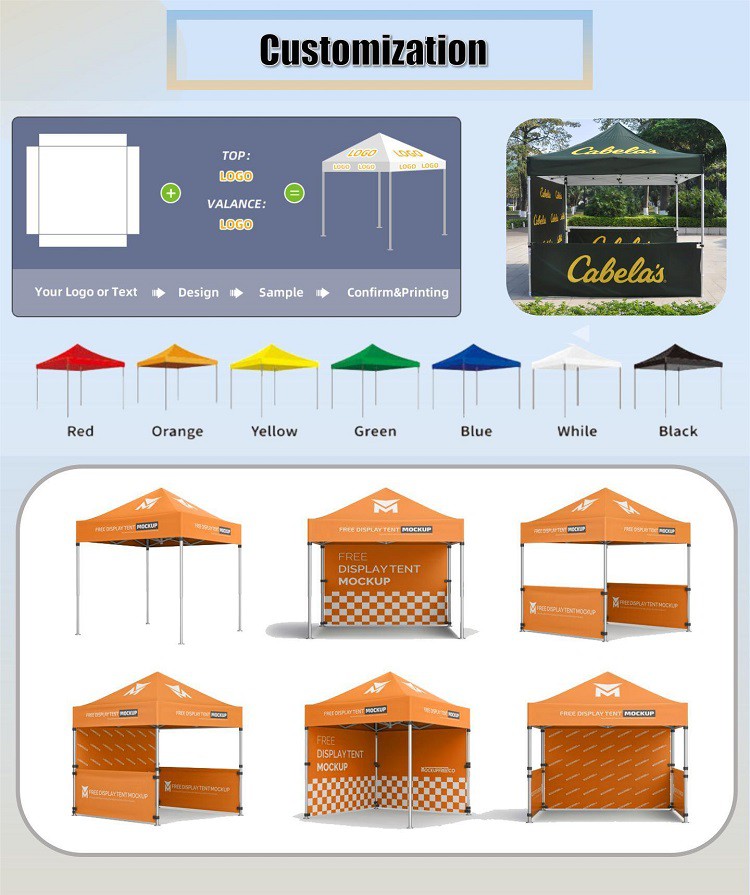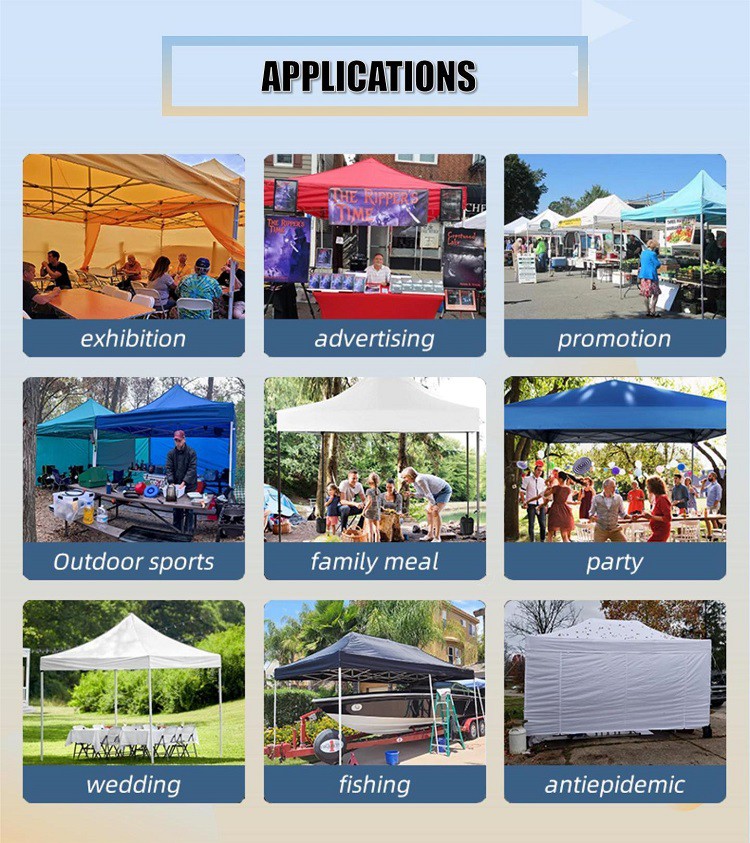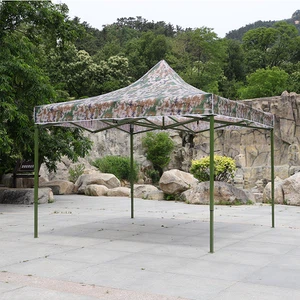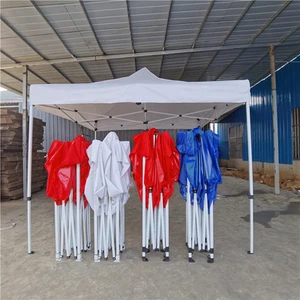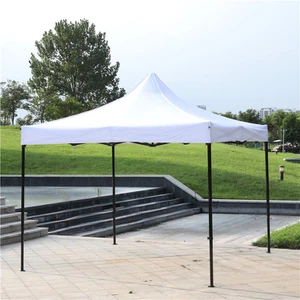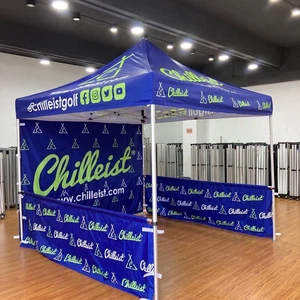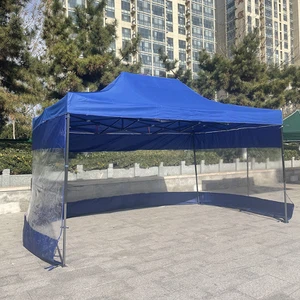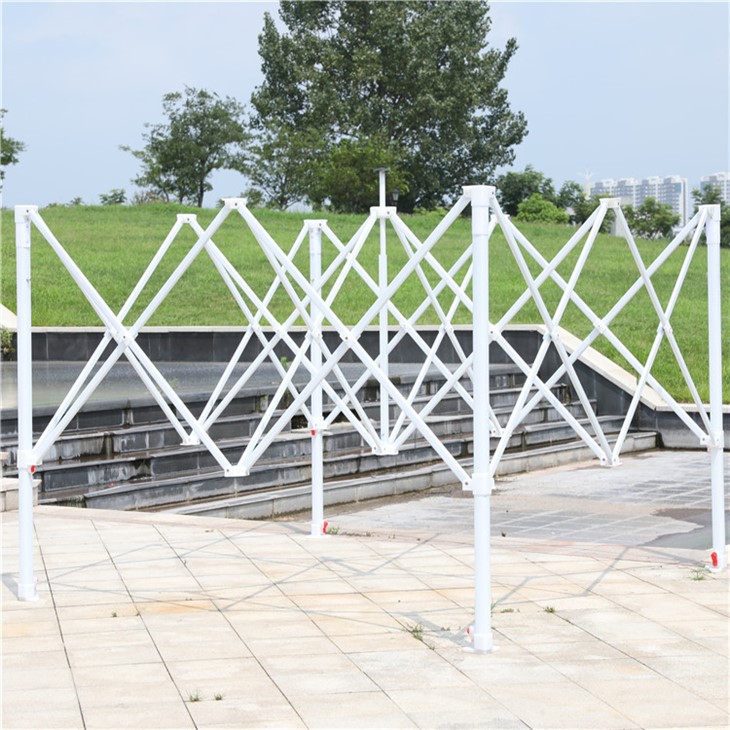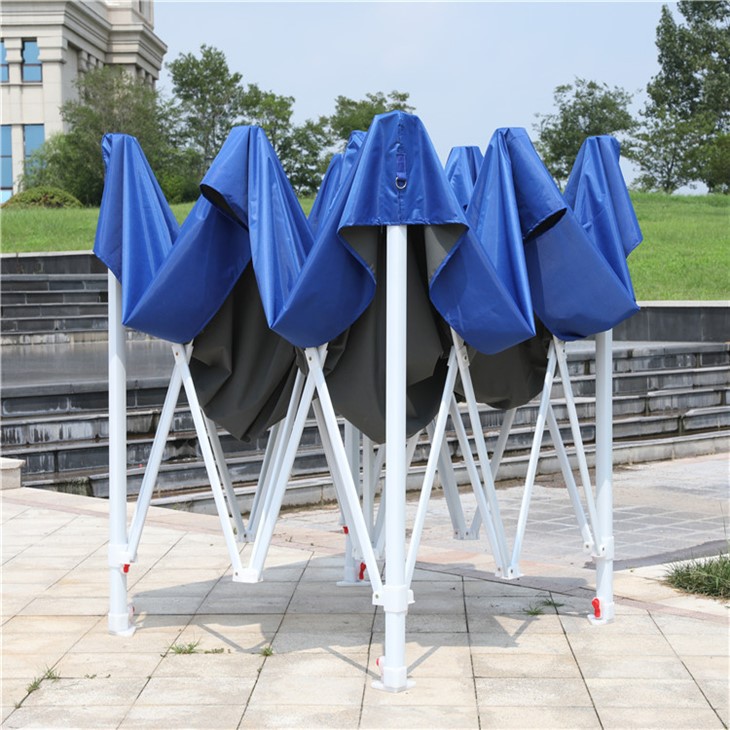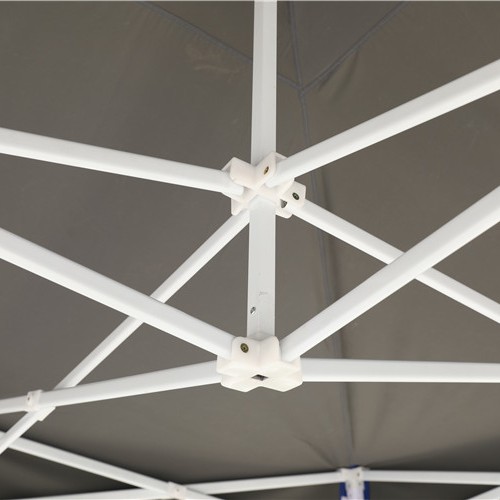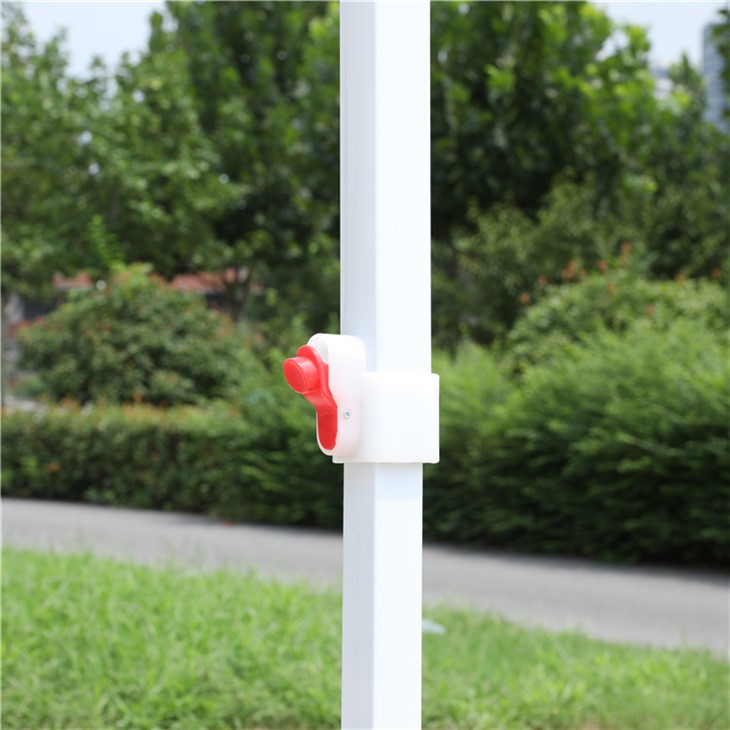Q: How many people does a 10x10 pop up tent cover?
A: A 10x10 canopy tent provides 100 square feet of shade and enough space to comfortably accomodate up to 6 chairs. By comparison, smaller 5x5 and 8x8 canopies are more portable but can only shade 2 to 4 people comfortably. Larger 12x12 and 10x15 tents are popular for larger gatherings and provide enough space for up to 10 chairs. 10x20 tents are common for commercial events like weddings, tradeshows, and street vendors and can shade up to 15 people.
Q: Is a straight leg or slant leg canopy tent better?
A: Straight leg tents are often considered better than a slant leg tents in terms of stability and overall structure efficiency. This is due to load distribution, where for straight leg canopies the legs are positioned vertically, creating a 90-degree angle with the ground. This ensures the forces acting on the canopy (such as its own weight or wind) are transmitted directly downward into the ground, resulting in a more even load distribution. In a slant leg canopy, the load distribution is less efficient and the forces can cause additional lateral forces that may compromise the stability of the structure.
Q: How do you anchor an outdoor canopy to keep it from blowing away?
A: Deciding on the type of weights to use for a pop up canopy tent depends on the type of surface it will be on. Sandbags are typically the most effective way to secure a pop up tent while at the beach so you won't have to transport the weight. Tie-downs with guy lines and ground stakes are a great option for grass and backyard anchoring. Weighted plates that slide onto the tent's steel feet are recommended for hard surfaces like decks, patios, or parking lots.
Q: How much weight is needed to hold down a pop up canopy?
A: We advise 4 lbs of weight for every 1 mph of expected winds. So for a 10x10 pop up tent, 40 lbs of weight would be sufficient in 10 mph wins. For anchor bags that can be filled with sand or rocks, we recommend filling the bag to the top as they are designed to contain the exact amount of weight needed to keep your tent safely grounded. We always recommend anchoring your canopy with one of these methods regardless of wind speeds.
Q: What materials are used in a pop up tent?
A: Most canopy frames are made of steel with a powder-coated finish to prevent rust and corrosion. Aluminum frames are not popular because aluminum is a softer metal than steel and prone to easily bending. The canopy fabric is typically made with denier polyester that has anywhere between a 200-600 thread count. This material is popular in many outdoor products because it is durable and tough, yet more affordable than nylon.
Q: Can one person put up a canopy?
A: Yes, one person can set up a 10x10 canopy tents by themselves. However, we have found that over time this tends to cause more stress on the joints as the one-person set up requires more pulling and shaking of the frame in order to lock it into position. This might cause the plastic truss connectors to weaken quicker than normal or even worse snap, so we always advise having a helping hand whenever possible.
Q: What color canopy is the coolest?
A: Believe it or not, a black canopy tent will keep you just as cool as a white one. Darker colors will be warmer to the touch as they absorb more heat while lighter colors reflect the light, but the temperature underneath will remain the same for both. Overall we still prefer lighter-colored tents because they keep the interior of the tent brighter compared to darker colors.
Q: Can you leave a pop up canopy up overnight?
A: Leaving your canopy tent up will almost certainly reduce the life of the shelter. Most canopy tents can withstand up to 30 mph winds, but a sudden passing storm can easily bend or snap the frame, a falling branch can tear a hole in the canopy fabric, and prolonged sunlight can cause your fabric to lose its sheen due to sun wash. For these reasons we highly recommend placing it back into the stroage bag after each use.
Q: How much do pop up canopy tents weigh?
A: The average weight of a 10x10 canopy tent is about 40lbs, however, there are a number of factors that can affect weight. Slant leg tents are typically around 30 lbs. because the canopy is smaller and uses less material. Heavy-duty cross truss frames are made of thicker steel than pyramid-style canopies and weigh about 50lbs on average.
